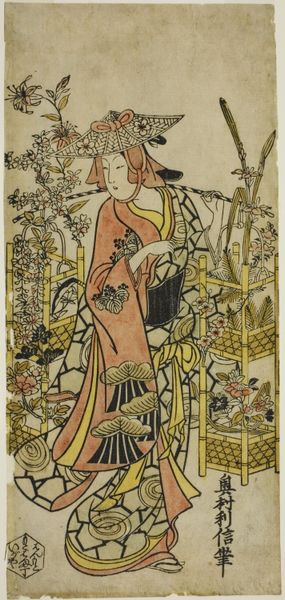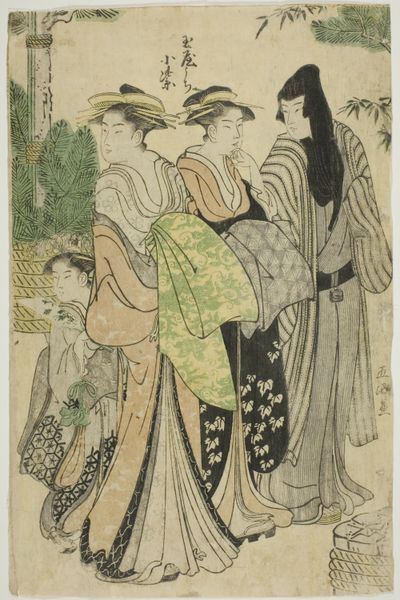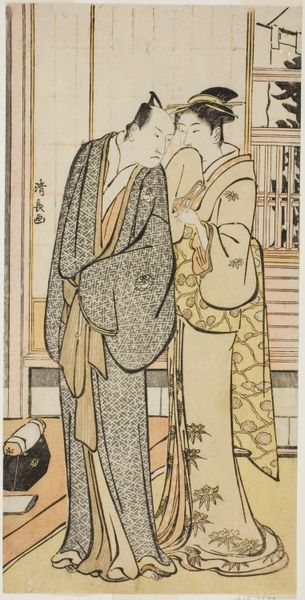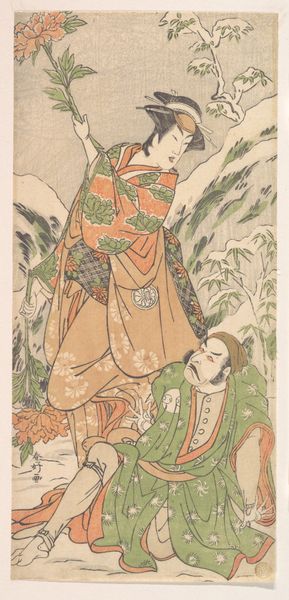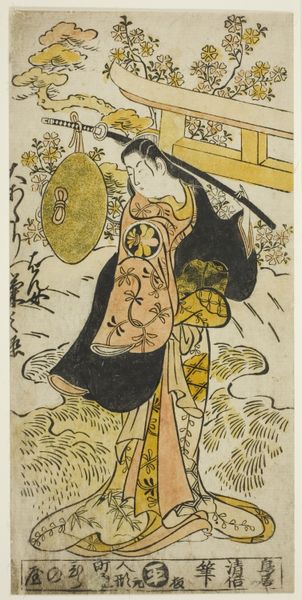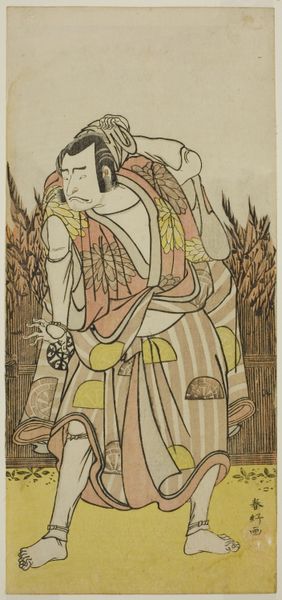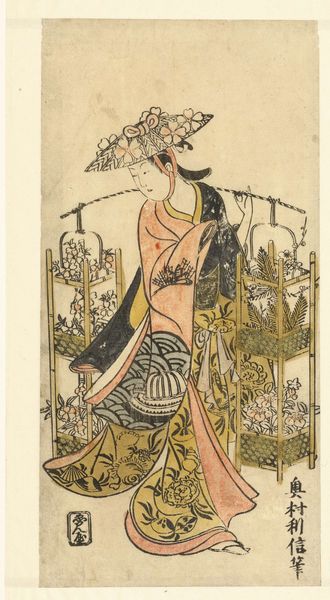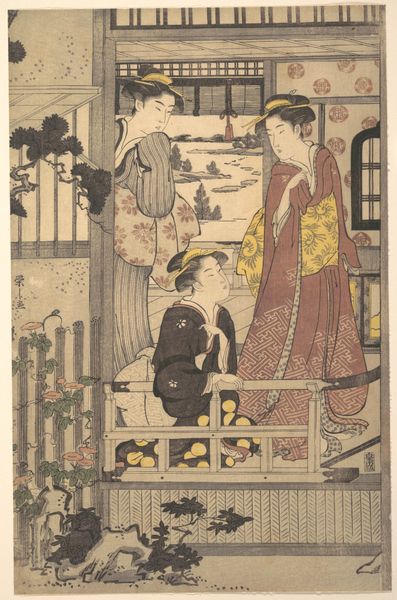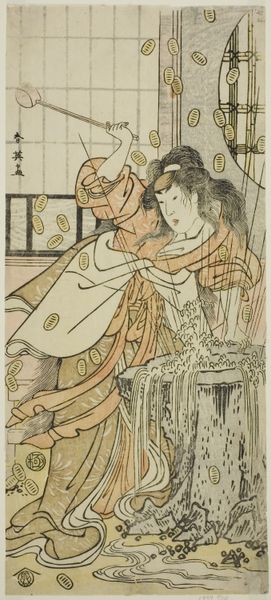
print, woodblock-print
#
portrait
# print
#
asian-art
#
ukiyo-e
#
figuration
#
woodblock-print
#
genre-painting
Dimensions: 30.5 × 15.2 cm (12 × 6 in.)
Copyright: Public Domain
Curator: Look at this intriguing work! "A Flower Vendor," a woodblock print made between 1737 and 1738 by Nishimura Shigenobu, invites us to reflect on gender, commerce, and representation. Editor: Immediately, I notice the repeating floral motifs; they feel significant. Is she selling these flowers or does their presence signify something deeper, a visual language beyond just commerce? Curator: It is difficult to look at a figure like this without thinking about the coded representations of women in Ukiyo-e culture; the role and expectation, but also her potential agency. Editor: Right. Beyond the flowers, notice how the bamboo lattice creates a framing effect around the figure; the yellow, orange, and black of her kimono form such a dynamic, almost artificial contrast with the verdant, organic floral background. The artist certainly uses a sophisticated interplay of color. What is she trying to convey? Curator: Scholars suggest this belongs to a group of prints depicting daily life, reflecting a growing merchant class and the entertainment districts during the Edo period. I would consider what that reveals regarding economic agency available, perhaps unevenly, to the figures presented. How might these seemingly innocuous works subtly contest social structures? Editor: Precisely! These flowers also suggest the ephemeral nature of beauty, mirroring the transient nature of life within these districts. Curator: Her presence evokes discussions around the very idea of visibility and labor in a society marked by rigid social boundaries. Editor: I find the almost stylized way in which the subject's face has been illustrated compelling, yet serene. So many visual elements create a complete portrait of a particular moment and feeling. Curator: Absolutely. Nishimura Shigenobu provides us with rich, albeit coded, narratives that allow us to probe historical frameworks and social norms around gender. Editor: An intricate composition—each symbolic thread interwoven within a potent visual tapestry.
Comments
No comments
Be the first to comment and join the conversation on the ultimate creative platform.

